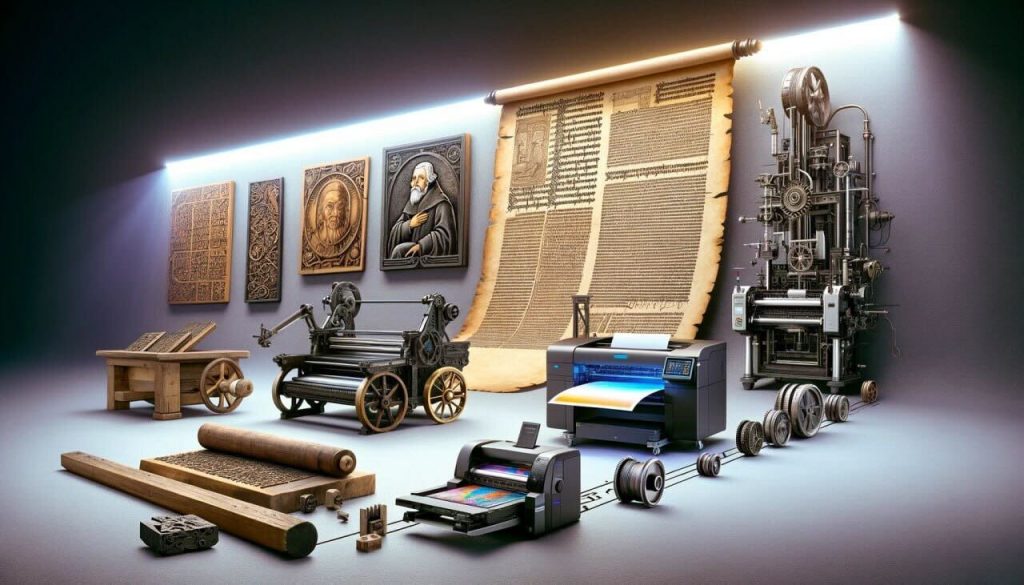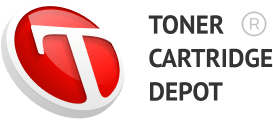
The printer, an unassuming yet indispensable fixture in homes and offices around the world, boasts a rich and varied history that spans centuries. From its ancient origins to the high-tech devices we rely on today, the evolution of the printer is a fascinating journey through time, technology, and society. This article delves into the surprising history of the printer, tracing its development from ancient printing techniques to the modern marvels that sit on our desks.
Ancient Printing Techniques
The story of printing begins long before the advent of the machines we recognize today. Ancient civilizations were the first to experiment with printing techniques, seeking ways to reproduce texts and images more efficiently than hand-copying. In ancient Mesopotamia, around 3000 BCE, cylinder seals were used to roll impressions onto clay tablets. Similarly, ancient Egyptians used stamps and stencils to decorate fabrics and walls.
Woodblock Printing
The next significant advancement in printing technology came from East Asia. Woodblock printing, developed in China during the Tang Dynasty (618–907 AD), involved carving an entire page of text or images in reverse on a wooden block, inking it, and then pressing it onto paper. This method made it possible to produce multiple copies of a document or book, significantly reducing the time and effort required compared to hand-copying. Woodblock printing spread to Korea and Japan, becoming the standard method of producing texts in East Asia for centuries.
Gutenberg Printing Press
The invention of the printing press by Johannes Gutenberg in the mid-15th century marked a pivotal moment in the history of printing. Gutenberg, a German blacksmith and printer, developed a press that combined the power of a screw press with movable type made of metal. This innovation drastically reduced the cost and increased the speed of book production, making books more accessible to a wider audience and fostering a culture of learning and literacy that had been unimaginable in the manuscript era.
Movable Type
Gutenberg’s key innovation was the development of movable type. Unlike woodblock printing, where a single block was carved for each page, movable type allowed individual letters to be arranged and rearranged to form different texts. This system was more versatile and efficient, enabling printers to produce different books or documents without the need for new blocks for each page. Movable type revolutionized the printing process, laying the groundwork for the mass production of printed material.
Printing Press Evolution
Following Gutenberg’s invention, the printing press underwent numerous modifications and improvements. In the 17th and 18th centuries, modifications were made to make presses more efficient, such as the introduction of the rolling press and the Stanhope press. The 19th century saw the development of steam-powered presses, which could produce thousands of pages per hour, and the rotary press, which printed from continuous rolls of paper. These advancements made printing faster, cheaper, and more accessible, contributing to the spread of information and ideas.
Impact of Printing on Society
The widespread availability of printed materials had a profound impact on society. The printing press facilitated the spread of new ideas, contributing to significant cultural and scientific advancements, such as the Renaissance and the Scientific Revolution. It democratized knowledge, breaking the monopoly of the educated elite on learning and allowing more people to access information. The press also played a crucial role in the Reformation and the Enlightenment, enabling the dissemination of controversial ideas that challenged traditional authority.
Early Printed Books
Among the earliest and most significant books printed using Gutenberg’s press was the Gutenberg Bible, completed around 1455. This was followed by a wave of other important works, including classical texts from Greece and Rome, scientific treatises, and religious texts. These early printed books, known as incunabula, are highly prized by collectors and historians for their historical and cultural significance.
Modern Printers
The evolution of printing technology continued into the 20th and 21st centuries with the development of digital printing technologies. Modern printers, such as inkjet and laser printers, have made it possible to produce high-quality printed materials quickly and efficiently in both homes and offices. These devices rely on digital files, eliminating the need for physical typesetting and allowing for easy revisions and customizations.
Inkjet vs. Laser Printers
The choice between inkjet and laser printers depends on specific needs and preferences. Inkjet printers are renowned for their ability to produce high-quality color images and photographs, making them ideal for personal and creative use. Laser printers, on the other hand, are faster and more cost-effective for text-heavy documents, making them a favorite in office settings. Both technologies represent the culmination of centuries of innovation in printing technology, offering users unparalleled convenience and quality.
Conclusion
The history of the printer is a testament to human ingenuity and the relentless pursuit of better ways to communicate. From ancient seals and woodblocks to Gutenberg’s press and beyond, each advancement in printing technology has left an indelible mark on society, shaping the way we share and consume information. As we continue to rely on printers in our daily lives, it’s worth reflecting on the long and remarkable journey that has brought us these modern marvels. The future of printing promises even more innovation, as new technologies continue to emerge, further transforming our ability to reproduce and disseminate knowledge.
In today’s fast-paced world, having a reliable source for printer and copier consumables is essential for both businesses and individuals alike. The Toner Cartridge Depot online store stands out as a premier destination for all your printing needs, offering a comprehensive selection of consumables for printers and copying machines. With an emphasis on fast delivery and competitive prices, Toner Cartridge Depot ensures that you can quickly and affordably find the toner cartridges, ink cartridges, and other essential supplies required to keep your printing operations running smoothly.
Whether you’re in need of high-quality ink for your home inkjet printer or durable toner for an office laser printer, Toner Cartridge Depot has you covered. Their user-friendly website makes it easy to find compatible consumables for a wide range of printer models from leading brands, ensuring that you get the right product for your specific equipment. Moreover, their commitment to customer satisfaction is reflected in their efficient delivery service, designed to minimize downtime and keep your productivity high.
